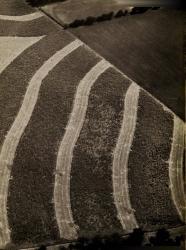New Addition to Database of U.S. Congressional Documents Available

Students and scholars of the U.S. Congress can access historical House and Senate reports and documents through a WSU Libraries’ database.
The libraries recently purchased the final segment (1980-94) of the U.S. Congressional Serial Set, the printed record of the U.S. House and Senate begun in 1817. The set and another database, American State Papers, a repository of documents from before 1817, can be accessed by WSU-affiliated users in the list of article databases at http://libraries.wsu.edu/find-articles.
Congressional reports and documents printed after 1994 are available free online from the Government Publishing Office’s Federal Digital System, FDsys (http://www.gpo.gov/fdsys/).
Behind the scenes of Congressional lawmaking
Published by Readex, the serial set holds 370,205 publications designated by Congress for printing. They are scanned from more than 15,400 original print volumes. In addition to an index of every publication – more than 11 million pages – readers can find citation records for the set’s 74,495 maps.
“These official Congressional documents include tables, graphs, maps, drawings, prints, photographs and other illustrative material and can be a pleasure to browse and read, even online,” said Marilyn Von Seggern, WSU Libraries’ government information librarian.
“The Serial Set is so important because it provides background information to the lawmaking work that Congress does,” she said. “It’s also important to academic libraries because it offers primary sources for historical research, and being able to search its full text and images makes it so much more accessible than it has been in the past.”
National conversations captured
The set is a rich compilation of Congressional materials on hundreds of topics, from exploration of the United States to social issues, conflicts and wars, scientific research and development, the economy and natural disasters, Von Seggern said.
For example, among 10 items related to the Dust Bowl, 1930-1940, is a 122-page report from the Great Plains Committee with a message from President Franklin D. Roosevelt (U.S. House. “The Future of the Great Plains.” (H.Doc 144). Febr. 10, 1937. U.S. Congressional Serial Set. Available from Readex; accessed 8/31/15). Numerous photographs, tables and maps document the drought conditions that had overtaken the central United States, an uncanny echo of today’s conversations around drought in the West.
The report also outlined recommendations to change the way agriculture had previously operated in the region, such as conserving and effectively using water resources, increasing the size of farms, creating grazing associations, controlling erosion through better plowing methods and alternative cropping plans and more.
“Whatever program is adopted must be cooperative and will require complementary lines of action by the Federal Government, State Governments and all the citizens of the region individually,” Roosevelt implored in his message. “Each has material interests at stake and can no longer afford to defer constructive action; each has moral responsibility for unwitting contributions to the causes of the present situation; and especially each has responsibility for undertaking lines of action essential to effectiveness of action by the others.”